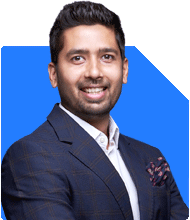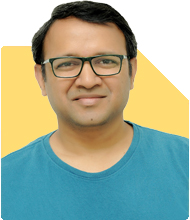Ramalingam Kalirajan |10894 Answers |Ask -Follow
Mutual Funds, Financial Planning Expert - Answered on May 30, 2025
He has an MBA in finance from the University of Madras and is a certified financial planner.
He is the director and chief financial planner at Holistic Investment, a Chennai-based firm that offers financial planning and wealth management advice.... more

Dear Sir, I would like to know if there are any mutual fund options that can also give me regular returns ?
There are mutual funds that offer regular income options.
Let us look at them in detail.
Monthly Income Through Mutual Funds
Some hybrid mutual funds aim to give regular cash flows.
These are ideal for retirees or those needing monthly income.
But these payouts are not guaranteed like bank FDs.
The amount and frequency can vary based on scheme performance.
These funds offer dividend payout options or Systematic Withdrawal Plan (SWP).
What is a Systematic Withdrawal Plan (SWP)?
SWP allows you to withdraw a fixed amount regularly.
You invest a lump sum, and take out fixed money monthly.
Your capital stays invested and continues to grow.
This is more tax-efficient than FD interest.
It gives you more control than choosing dividend option.
Why Regular Mutual Funds via CFP is Better
Always invest through regular plans with CFP guidance.
Avoid direct plans as they give no advisory support.
Also avoid index funds, as they don’t help in personal goal planning.
A CFP helps to select best performing active funds for regular cash flow.
He will also help you design SWP as per your monthly needs.
Points to Keep in Mind
SWP works best when capital stays for long-term.
Avoid withdrawing more than what your fund earns yearly.
Taxation depends on fund type and holding period.
For equity funds, LTCG above Rs 1.25 lakh is taxed at 12.5%.
STCG is taxed at 20% for equity mutual funds.
For debt funds, all gains are taxed as per your income slab.
Sample Planning Approach
First, calculate your monthly cash flow need.
Choose a suitable hybrid or equity mutual fund.
Invest a lump sum or grow it through SIP.
Start SWP after 1–2 years, if needed.
Review SWP and portfolio yearly with your CFP.
Don’t withdraw in falling markets unless urgent.
This is a professional way to create passive income.
It also gives your capital a chance to grow.
Best Regards,
K. Ramalingam, MBA, CFP
Chief Financial Planner,
www.holisticinvestment.in
https://www.youtube.com/@HolisticInvestment
You may like to see similar questions and answers below
Kirtan A Shah | Answer |Ask -Follow
MF Expert, Financial Planner - Answered on Jul 11, 2023
Ramalingam Kalirajan |10894 Answers |Ask -Follow
Mutual Funds, Financial Planning Expert - Answered on May 06, 2024
Ramalingam Kalirajan |10894 Answers |Ask -Follow
Mutual Funds, Financial Planning Expert - Answered on May 09, 2024
Ramalingam Kalirajan |10894 Answers |Ask -Follow
Mutual Funds, Financial Planning Expert - Answered on Jul 27, 2024
Ramalingam Kalirajan |10894 Answers |Ask -Follow
Mutual Funds, Financial Planning Expert - Answered on Apr 24, 2025
Mayank Chandel |2576 Answers |Ask -Follow
IIT-JEE, NEET-UG, SAT, CLAT, CA, CS Exam Expert - Answered on Dec 17, 2025
Radheshyam Zanwar |6747 Answers |Ask -Follow
MHT-CET, IIT-JEE, NEET-UG Expert - Answered on Dec 16, 2025
Shalini Singh |181 Answers |Ask -Follow
Dating Coach - Answered on Dec 16, 2025
Patrick Dsouza |1429 Answers |Ask -Follow
CAT, XAT, CMAT, CET Expert - Answered on Dec 16, 2025
Nayagam P P |10858 Answers |Ask -Follow
Career Counsellor - Answered on Dec 16, 2025
Nayagam P P |10858 Answers |Ask -Follow
Career Counsellor - Answered on Dec 16, 2025
Samraat Jadhav |2510 Answers |Ask -Follow
Stock Market Expert - Answered on Dec 16, 2025
Samraat Jadhav |2510 Answers |Ask -Follow
Stock Market Expert - Answered on Dec 16, 2025
Nayagam P P |10858 Answers |Ask -Follow
Career Counsellor - Answered on Dec 16, 2025
Nayagam P P |10858 Answers |Ask -Follow
Career Counsellor - Answered on Dec 16, 2025


























